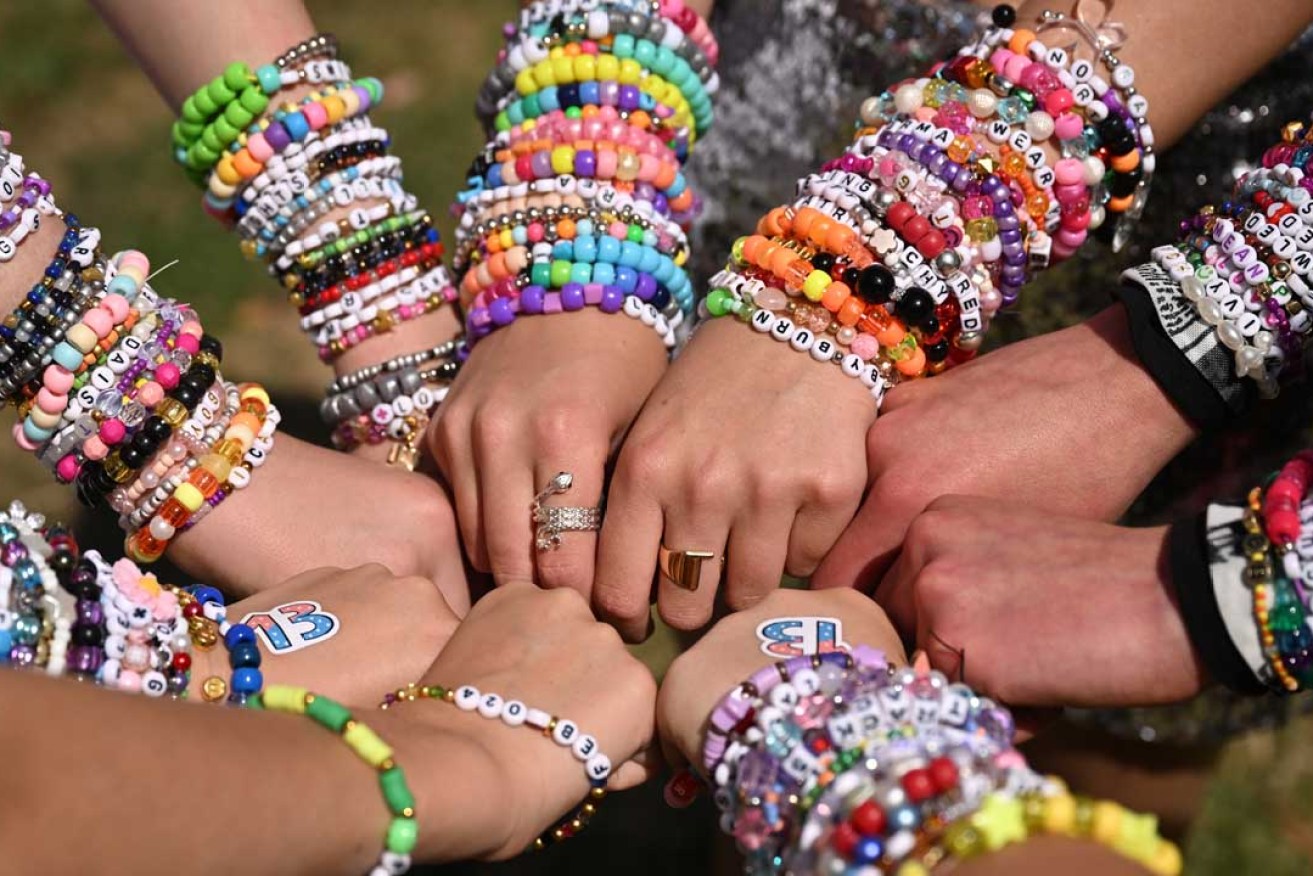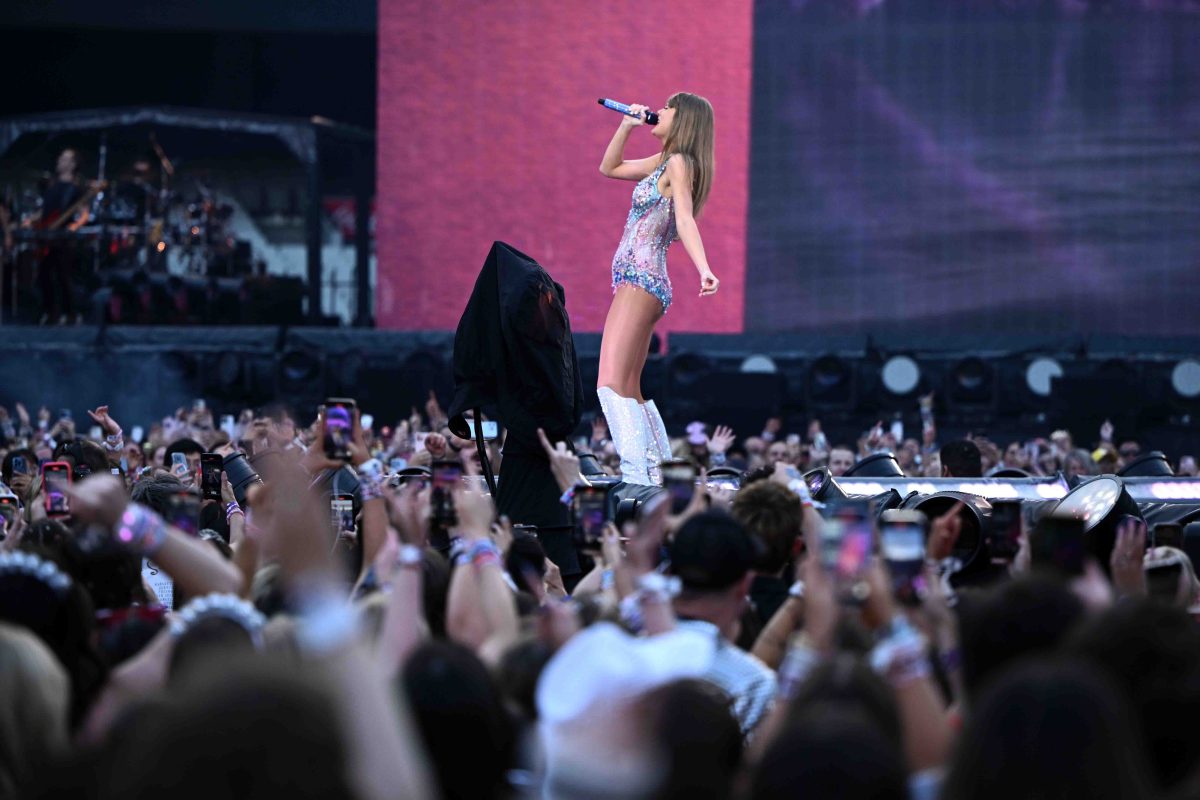The Taylor Swift effect isn’t new but its impact could be
As a sceptic about full-on fandom, Ali Clarke examines her own response to the Taylor Swift phenomenon and looks to that moment when an older generation in Adelaide experienced something very similar.


Taylor Swift fans show off their friendship bracelets ahead of the singer songwriter's first Eras tour concert at the MCG. Photo: AAP/Joel Carrett
Are you completely over Taylor Swift? It’s been a lot hasn’t it?
But, as she (private) jets off to her next destination, I’m left in a sea of did and did-nots trying to work out what the hell has just happened.
Just in case you’ve been living under a rock or, like me, prefer your music from the “classics”, be it Beethoven, Gershwin or The Stones, it appears this 34-year-old is the voice of the next generation.
Actually, scrap that, she’s the voice of the next generation and at least half of mine, as parents of these devotees are forced to absorb her songs and lyrics in cars, at home or whenever a group of them congregate.
Contrary to what used to happen when my mum walked into my room to tell me to “turn down that god-awful INKs!” (for the record it was INXS, but that’s how she read their name off my poster), these parents have seemed to take on both their child’s delight and the power of her writing and become fans as well.
As much she has been a turn-on for these Swifties, others have been very quick to turn it off, and I can’t help but think it is more than just a difference in musical taste.
Clearly, there will always be people who write off what she has achieved just because she’s excelled in the pop genre whose very definition – music that appeals to a wide audience, that’s danceable, is easy to remember and uses relatively simple notation – assaults some people’s idea of talent.
Others will rail against her because they see the love for her as too much, too excessive, and too commercial: they are those who live to be contrary, who delight in the margins.

Taylor Swift at one of her sold-out Eras concerts at the MCG . Photo: AAP/Joel Carrett
For me, it was a conversation with my mother that perhaps led me to the reason for my ambivalence.
Simply, I don’t know how to throw myself in with full-on fandom.
You see Mum, like Adelaide, had Beatlemania in spades. Her entire generation did.
June 12, 1964, must have been an incredible day for the more than 300,000 people who lined Anzac Highway and King William Street to welcome the Fab Four.
Just think about it – that’s nearly six full Adelaide Ovals, more than 26 full-capacity Adelaide Entertainment Centres or every South Australian public service member rocking up AND bringing a friend or two.
At the time it was the largest gathering they had attracted anywhere in the world. Without social media, without instant replay, with images only captured in black and white, and the Fab Four seen as fleeting specks, it genuinely stopped the state in its tracks.
And every time I see the black and white footage of (mainly) young girls, screaming without abandon at these four men, I can’t help but wonder why they didn’t feel just a little bit silly?
The psychology behind it encompasses everything from a sense of belonging to self-expression to the ignition of cognitive memory.
But with six in 10 Gen Z-ers now identifying as superfans, the open access social media promotes has done nothing but strengthen the parasocial relationship these Swifties think they have with Taylor herself.
She enters the stadium, cue screaming, crying and a rush of dopamine and serotonin; and these reactions can spread through the crowd in emotional contagion.
(And that’s a real thing, not just a cute phrase I’ve coined).
So what of the economic contagion?
At the start of the year some money crunchers were breathlessly predicting the Taylor Tour would inject anywhere between $140 million to more than a billion dollars into the economy.
Now she’s gone, though, KPMG’s chief economist Brendan Rynne says that figure sits closer to $10 million, while she takes over $100 million back to the states.
Some suggest he might not have been as charitable as he could have been (for example, not including the retained expenditure that would have instead gone overseas as Aussies travel) but regardless of any discrepancies, when an official T-shirt costs $65 and a jumper $120, the question of worth must hit the back pocket.
So, in the end, perhaps that’s what it all comes down to.
For some, she’ll never be worth the money: for others, they would have paid even more to have the experience they did.
But even though I’m ambivalent to Ms Swift’s charms, surely having our youngest music lovers looking up to a woman who connects through positivity and empowerment, is so much better than all of them devoting themselves to someone spruiking hate, misogyny or racism?
Perhaps when you consider that, the Taylor Swift experience is, in fact, priceless.
Ali Clarke presents the breakfast show on Mix 102.3. She is a regular columnist for InDaily.




